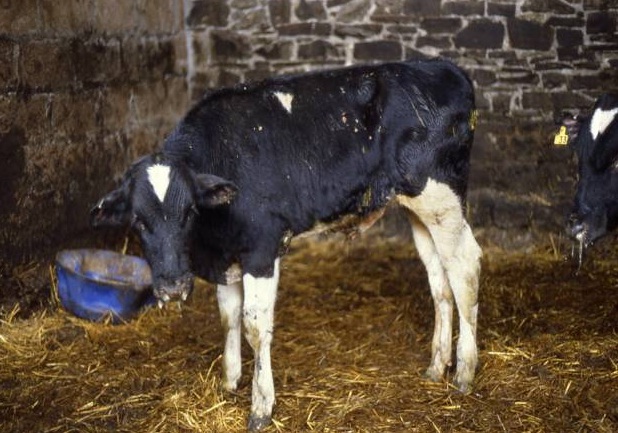
Many farmers may be underestimated the true cost of calf pneumonia and failing to take appropriate steps to stop the disease according to Merial's veterinary advisor Fiona MacGillivray.
"Estimates of the costs vary between £43 and £84 per affected calf" she said.
"It is not just the cost of treatment, although this can account for around 40 per cent of the costs."
"However, a further 40 per cent is accounted for by the loss of production. With costs on this scale, it is more important than ever that everything possible is done to try to prevent the onset of calf pneumonia."
If calf pneumonia is severe, or left untreated, it can result in permanent damage to the lung function of the animal.
Even if the calf ‘recovers’, it can be left stunted with poor growth rates and it usually remains susceptible to infection.
Calf pneumonia is one of the primary diseases affecting young cattle. It is often a group problem, and particularly affects housed calves.
"There are a number of factors involved; these include the interaction of various infectious organisms, the level of immunity of the calf, and environmental factors" MacGillivray said.
Action to ensure that calves are not vulnerable to pneumonia starts when they are born.
Good colostrum intake is essential, as it is full of antibodies from the dam that help to provide the calf with immunity. Calves should receive good quality colostrum within the first six hours after birth.
Good housing management is also critical to pneumonia prevention. Ventilation should be sufficient and appropriate to all weather conditions to ensure good air flow through the building. This helps to prevent the build-up of ammonia, which can be an irritant, and stops the natural defence systems in the upper respiratory tract working properly. However, draughts should be prevented as they can also make calves prone to disease.
Regular cleaning and good hygiene will ensure that bedding and floors remain dry, and infectious organisms are less likely to survive and multiply. It is also important to ensure that drainage is kept clear.
Practices that can increase the likelihood of calf pneumonia occurring are overstocking and mixing animals of different ages.
"There is only so much air in a building, and if there are too many cattle in a small space the air can become warm and moist, making it a perfect breeding ground for bacteria and viruses."
"Generally older animals are more likely to have had the chance to develop immunity to circulating pneumonia pathogens yet can still act as a source of infection to younger cattle, which have not yet had the chance to build up immunity. Younger animals may also be stressed when introduced into a group of older animals, so they can be more likely to succumb to disease."
A case study published recently by UK Vet2 highlighted exactly these issues: key factors include high numbers of cattle calving in one place, calves kept too long in pens, and sick animals kept in calving pens, as likely causes of an outbreak of pneumonia.
The author also emphasised the importance of proper ventilation and good quality colostrum.
Fiona MacGillivray says: "Where antibiotic treatment is required, it is important that it starts to work quickly, and lasts long enough to ensure that damaged lung tissue is protected against re- infection during the time taken to repair, thus preventing the need for repeated handling."
The UK Vet case study says that "The single most important factor determining the success of therapy in calves with pneumonia is early onset of treatment and subsequent adequate duration of treatment."
"Early and effective treatment of calves is essential to reduce spread of infection. It also minimises the possibility of long term pulmonary damage and chronic pneumonia."
